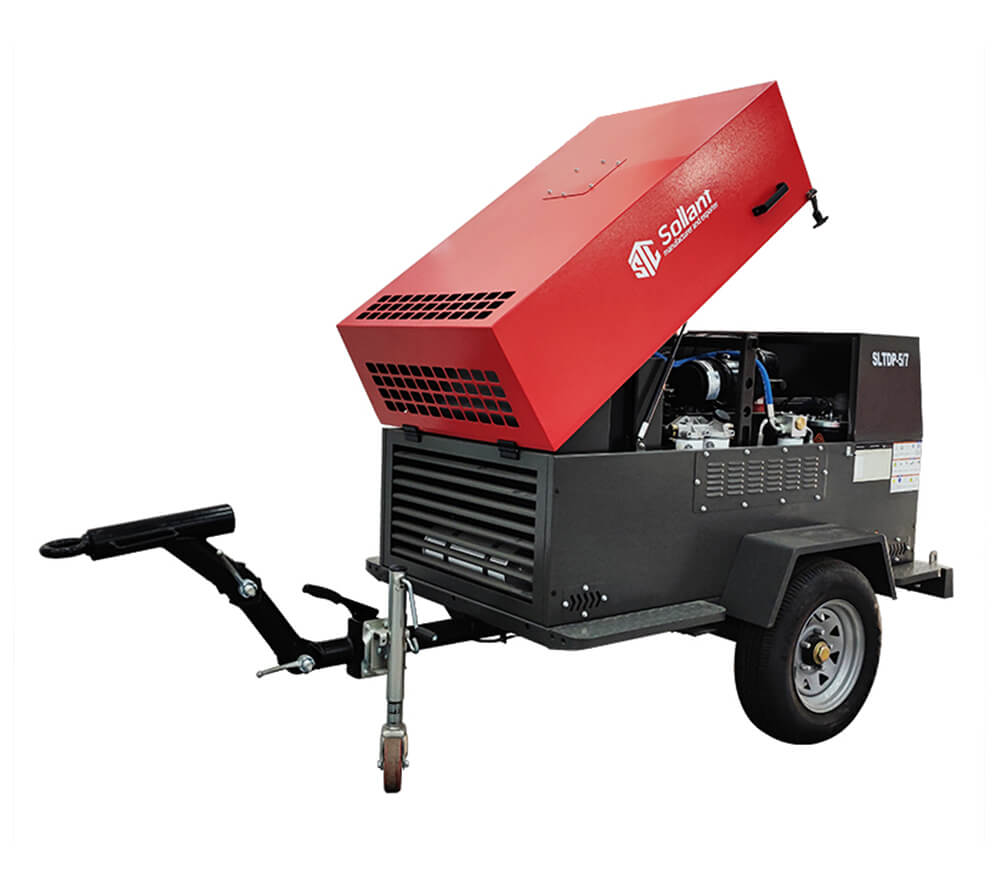Mining
In the mining production system, the compressed air system plays an irreplaceable key role.
The "power heart" of mining production: the strategic position of compressed air systems
In the mining production system, the compressed air system plays an irreplaceable key role. According to statistics from the International Mining Association, about 65% of the mechanical equipment in the world’s mines relies on compressed air for power, and its energy consumption accounts for 25%-40% of the total electricity consumption of mines. Unlike other industrial fields, mining production has unique requirements for compressed air systems: they must adapt to extremely harsh environments (high dust, high humidity, corrosive gases), have super reliability (continuous operation for more than 8,000 hours), and meet strict safety standards (explosion-proof, fire-proof, and shock-proof).
Modern mining compressed air systems have developed from a single power source to an intelligent integrated energy platform, and their technological evolution is directly related to the production efficiency of mines. Taking the Escondida copper mine in Chile as an example, by upgrading the air compression system, its rock drilling efficiency has increased by 22%, and a single device saves more than US$500,000 in electricity costs per year. This fully reflects the strategic value of the air compression system in the mining value chain.
The key role of air compressors in mining
Driving pneumatic tools and equipment
In mining, pneumatic tools and equipment are widely used in drilling, blasting, transportation, cleaning and other operations. The compressed air provided by the air compressor becomes the power source for pneumatic tools and equipment. For example, pneumatic drills, pneumatic hammers, pneumatic conveying systems, etc. all require compressed air to drive. In this way, the compressor can provide stable power for mining operations to ensure efficient and stable operations.
Supporting mining transportation and material transportation
In mining, material transportation and ore handling are heavy and critical operations. Air compressors provide power for pneumatic conveying equipment to help transport ore, sand and other materials to designated locations through pipelines. Especially in underground mine operations, pneumatic conveying systems have great advantages, which can avoid sparks generated by power equipment, reduce safety hazards in mines, and ensure the safety of the working environment.
Mine ventilation and gas emission
The ventilation system of the mine environment relies on air compressors to provide sufficient air source to ensure air circulation in the mine, prevent the accumulation of harmful gases (such as carbon monoxide, methane, etc.), and reduce the risk of accidents. Air compressors can not only provide the compressed air required for mine ventilation, but also discharge harmful gases in the mine in time through special devices, improve the mine working environment, and ensure the life safety of miners.
Cleaning and dust removal
In mining operations, dust and ore dust are the main hidden dangers that affect the working environment and employee health. The compressed air provided by air compressors is often used to clean mine equipment, tools and work areas to remove dust and impurities. Through high-pressure air injection, mining equipment and passages can be quickly cleaned, avoiding equipment failure due to dust accumulation, and creating a safer and healthier working environment for miners.
Cooling system
In certain production links of the mining industry, especially operations in high-temperature environments, air compressors provide the necessary compressed air for the cooling system to help maintain the normal operation of the equipment. Compressed air can not only help cool the mechanical equipment in the mine, but also reduce the temperature of the working environment and improve work efficiency.
Specific application of air compressors in mining
Drilling operations
In mining drilling operations, air compressors are widely used to drive pneumatic drills. During the drilling process, compressed air can provide sufficient power to ensure that the drill completes the drilling task with high efficiency and high precision. Air compressors can also be used to help remove rock cuttings and dust in the borehole to ensure smooth drilling.
Blasting operation
During the mining process, blasting operation is an indispensable link. Air compressors can provide a stable air source for blasting devices, help activate blasting tools and ensure the smooth implementation of blasting operations. In addition, compressed air can also be used to control ventilation after blasting, reduce the concentration of harmful gases in the mine, and ensure the safety of operations.
Ore crushing and screening
In the process of ore crushing and screening, air compressors are often used in conjunction with crushing equipment to complete the crushing task through pneumatic tools. The compressed air provided by the air compressor provides power for the crushing equipment to ensure that the ore is crushed quickly and evenly, meeting the needs of subsequent processing.
Pneumatic transportation system
The application of pneumatic transportation systems in mining has also been gradually widely promoted. Especially in underground mine operations, traditional power transmission systems have certain safety hazards. The compressed air provided by the air compressor drives the pneumatic conveying system, which quickly transports ore and materials through pipelines to the ground or other processing areas to ensure efficient and safe material transportation.
Mine ventilation and gas monitoring
In underground mines, air compressors, as part of the ventilation system, help provide ventilation air sources in the mine. Through continuous air flow, compressed air can effectively expel harmful gases in the mine, ensuring that miners breathe fresh air. In addition, compressed air can also be used in monitoring systems to help detect gas concentrations in mines and ensure the safety of the working environment.




